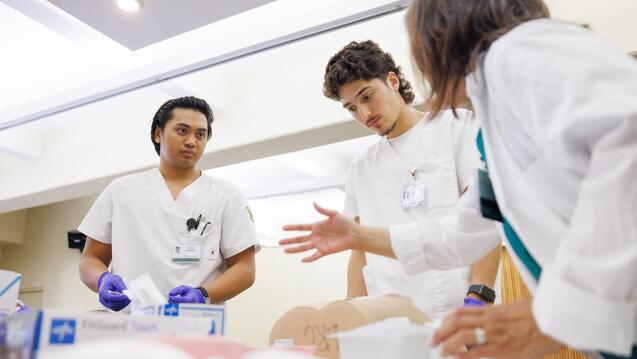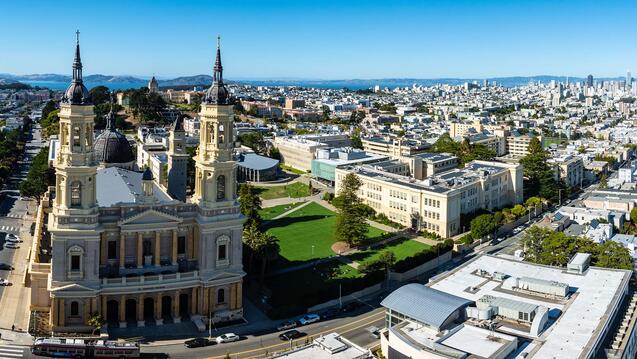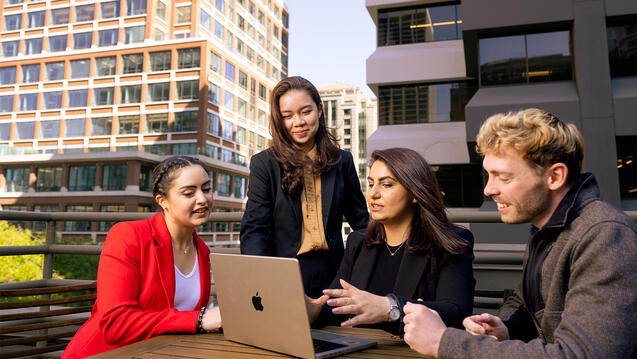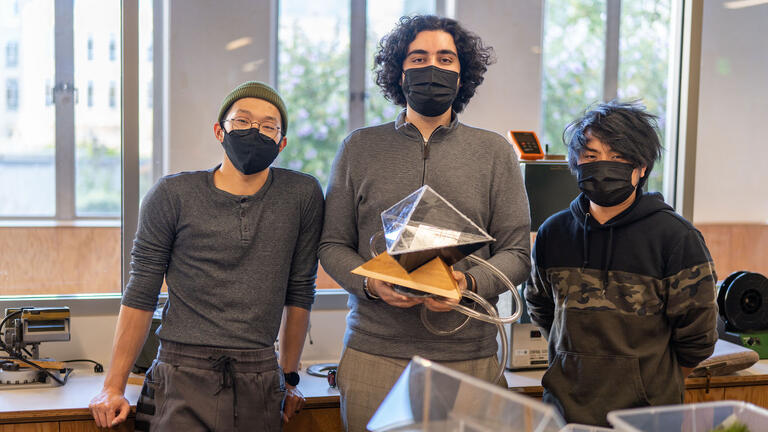
Students Think Big in Innovation Hive
The Innovation Hive in Harney Science Center is now open for business, and engineering students are making the space their own. Here, seven teams share progress on their projects.
Rowin Azariah Galvez ’24, Sean Vartan ’24, and Alexander Khong ’24:

“This solar distillation prism takes rainwater and cleans it and stores it,” said Sean Vartan. “Rainwater comes through the tube and up into the interval. When sunlight hits the interval, it reflects off the reflective surfaces and focuses on the rainwater, causing it to turn into steam and rise, leaving the dirt behind. The water condenses again after that and gravity causes the water to drip into the cistern at the bottom. This project matters for USF. We designed it for a cistern that USF has but isn’t able to use because the rainwater is too dirty to store for too long. On a larger scale, this is inspired by designs from developing countries where water treatment plants aren't feasible, and it could be important for places like that.”
Kristal Franco ’24 and Mia Echivarre-Morelli ’24 (teammate Mahal Tran ’24 not present):
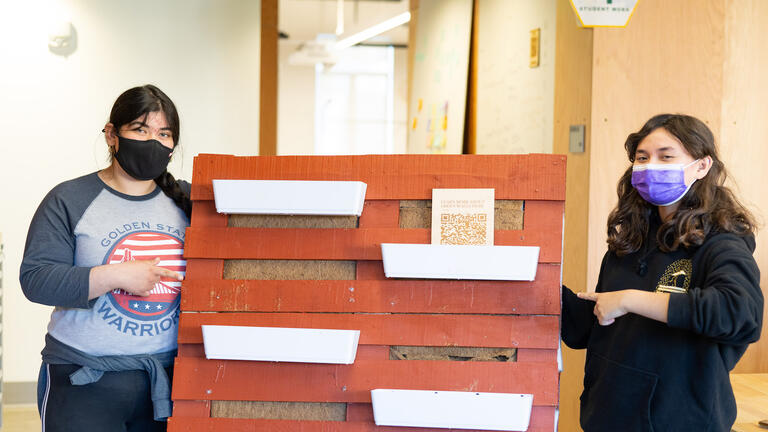
“This is a green wall,” said Mia Echivarre-Morelli. “The white plastic bins hold plants and they filter water from each plant to the next. You can tell this wall is a prototype because most of the materials are repurposed. We found this shipping palette in the Undercaf. This green wall works with San Francisco Public Utilities Commission (SFPUC) water guidelines. We’ll be pitching this to SFPUC to see if we can actually install it in the school. The city and the world have a lot of gray infrastructure with a lot of pipes and concrete, and that’s not amazing for the environment. Green infrastructure such as green walls helps to manage stormwater and mitigate flooding. There’s a bunch of water that comes off the roof of the library so our goal is to put this there and collect the water that is currently causing paint damage to the walls.”
LaPrecious Shannon ’25 and Lherylle Bunnao ’25:
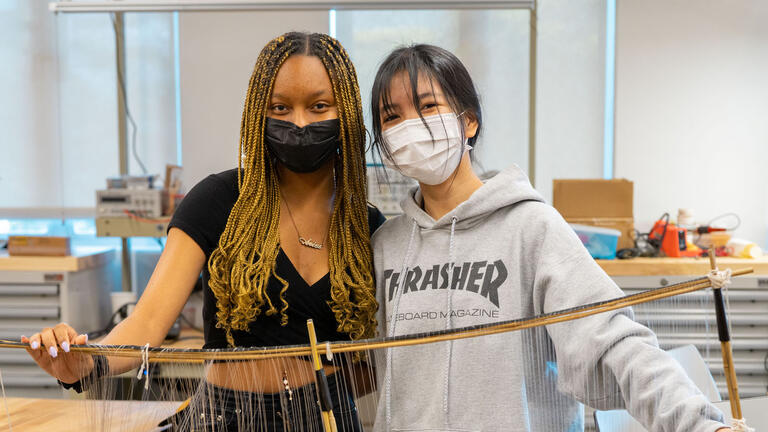
“This is a fog catcher. We wanted to create something sustainable that could provide water to places that don’t get as much rainwater as they do fog,” said LaPrecious Shannon. “We used fishing line along bamboo sticks because fishing line collects fog water better than mesh. The water collects on the fishing line and gravity pulls it down so that it trickles into the gutter and into a bucket. We want to help the environment and make something accessible and sustainable. It doesn’t rain much here and there’s a lot of fog, so this could really help local communities.”
Marino Matthews ’24 (teammates Dylan Mitchley ’24 and Ty de la Huerta ’24 not present):
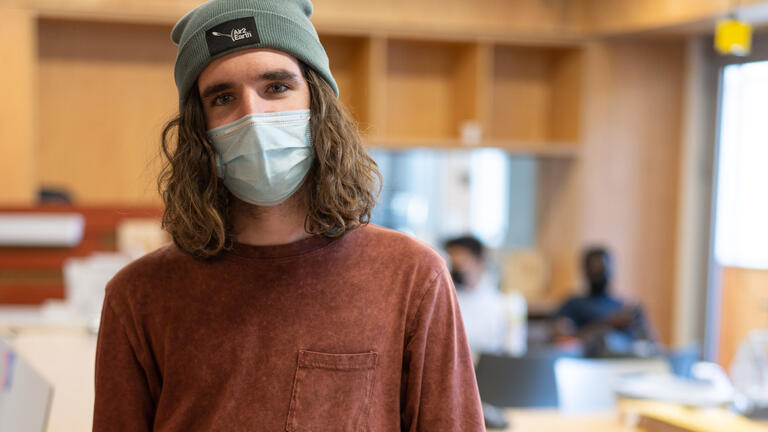
“This is a prototype for a green bus stop that uses a rainwater-harvesting green roof and a water cistern to collect and store water and make MUNI more sustainable. The current bus- stop design doesn’t serve much of a purpose except for providing shelter from the rain. This project is about looking at the world around you and thinking about how you can make things accessible and sustainable.”
Kevin Sarmiento ’24:
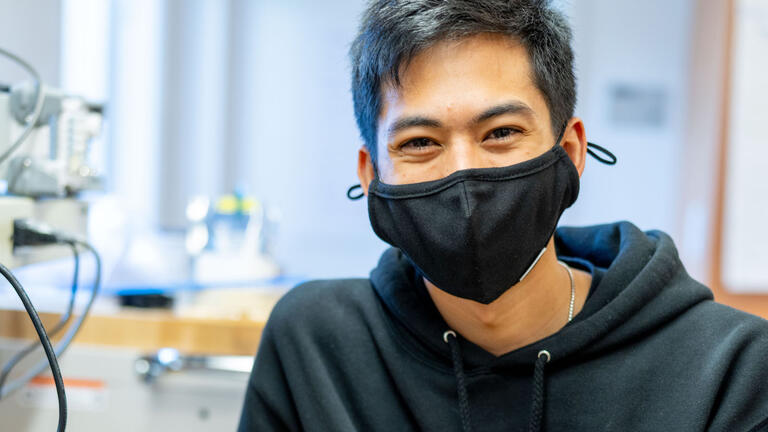
“This is a microphone that you can make yourself. If you bought a commercial mic of this quality, you could spend hundreds or thousands of dollars instead of making your own for just over $100. I think affordability is really important, especially after the pandemic. Being able to make your own clear, crisp mic could be important to people who spend a lot of time on Zoom or work from home.”
Neo Marcos ’25:
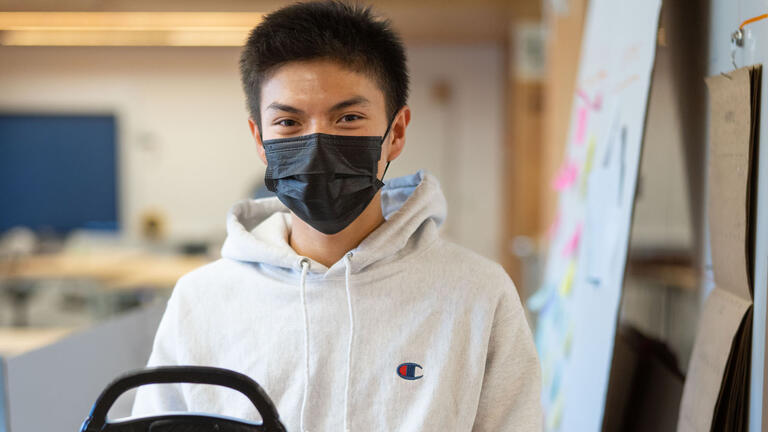
“I’m into cars. I’ve always loved them. Something that interests me is the Tesla yoke steering wheel, but it’s controversial because there’s no top part so it’s uncomfortable for a lot of drivers. My design allows people to choose whether they want the top part or not because it attaches and detaches magnetically. I wanted it to accommodate every driver. Feeling safe while driving is really important and this option might make people feel safer.”
Levi Kottut ’25 (teammates Carlos Cedillos ’25 and Jasmine Rodriguez ’25 not present):
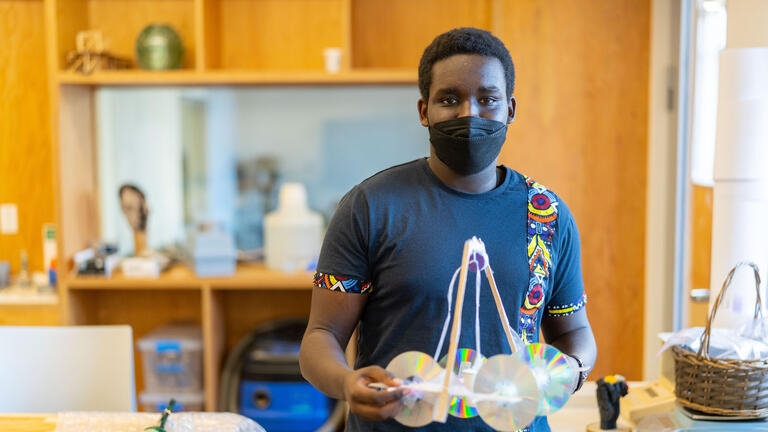
“This is a balloon-powered car. We were tasked to make it with as few materials as possible. We won because we didn’t even use a balloon. We have sticks, bottle caps, and straws. Balloons were the most expensive material, so we used poker chips to move the car instead of the balloon. When we drop poker chips in the cup, they fall and make the car move. This project matters because sometimes going against the grain or finding a new way to reach your goal can help you come up with more innovative ideas.”
